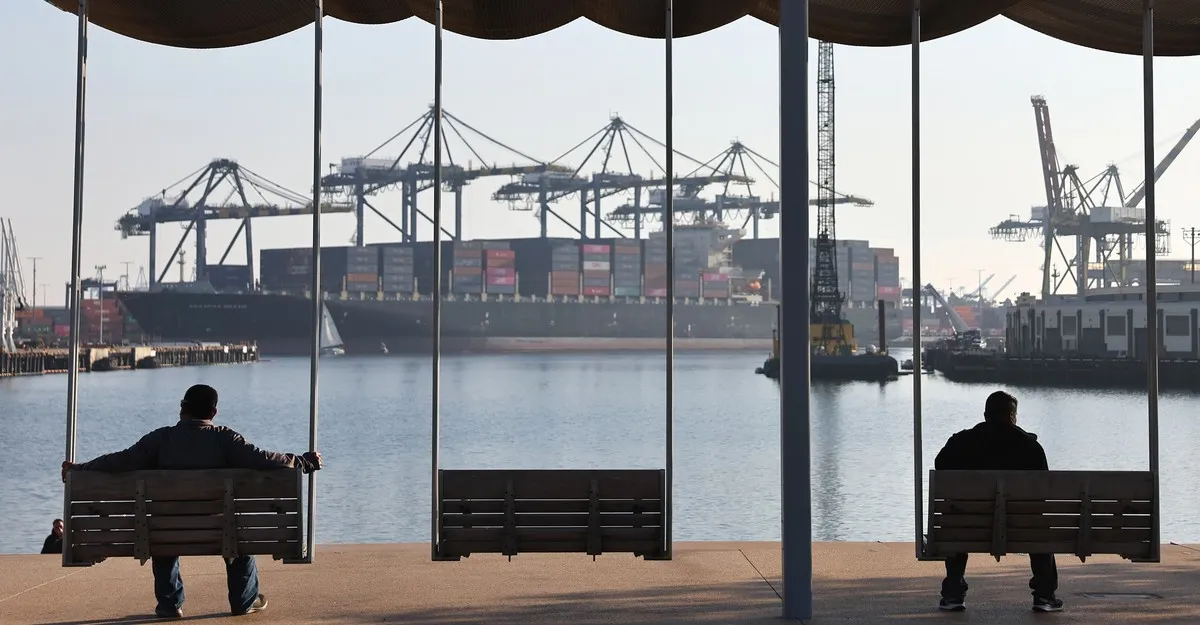
In the United States, opinions on tariffs vary widely among citizens. While some oppose tariffs on the grounds of promoting a free market, others support them for reasons of national security or the desire to revitalize American manufacturing. These discussions are part of a healthy democratic debate. However, the early weeks of President Donald Trump’s administration have highlighted that a principled discourse on tariff policy is absent, revealing a chaotic state of affairs instead.
The current landscape of economic policy uncertainty in the U.S. has reached alarming levels. According to an index tracking such uncertainty since 1985, conditions have only been more volatile once in the last four decades—during the onset of the coronavirus pandemic, a global crisis largely beyond the nation’s control. In stark contrast, the ongoing turmoil surrounding tariff policies is a result of unilateral decisions made by the administration.
President Trump’s strategy regarding tariffs has been erratic, with frequent shifts in the size, nature, and timing of policies, along with justifications that seem to change at a moment's notice. Before market participants can adapt to one announcement, they are bombarded by news of yet another directional shift from the administration. This has resulted in a trade war involving the United States and its top trading partners: Canada, the European Union, Mexico, and China.
Businesses thrive on predictability in regulatory and fiscal policies to make informed decisions about hiring, investments, and pricing strategies. The recent volatility has made it increasingly difficult for companies to initiate long-term, capital-intensive projects. As one adviser to major energy companies noted, the chaotic environment surrounding tariffs has forced clients to pause essential business decisions due to uncertainty regarding permitting, community approvals, and supply chain costs.
While large corporations often find ways to navigate the turbulent waters of tariff policy—sometimes receiving direct relief from tariffs—small businesses struggle to adapt. They lack the resources to absorb sudden shocks and are less equipped to stay updated on the ever-changing tariff landscape. Consequently, many small businesses may find themselves unprepared to cope with the implications of these policies.
The uncertainty surrounding tariffs is also impacting the labor market. As reported by my colleague Rogé Karma, job switching is at its lowest in nearly a decade, despite a low unemployment rate. This reflects a broader trend of risk aversion among both employers and employees, who are hesitant to make significant changes in an unpredictable economic environment.
Some advocates believe that the current turmoil is part of a grand “economic masterplan,” but skepticism abounds. The Trump administration has failed to present a coherent rationale for its various tariff policies. If the goal is to rebalance trade, why are tariffs being lifted? If they are intended to bolster negotiating power on issues like immigration, why are they still applied to Canada? This lack of clarity undermines trust in both the policies and the administration itself.
As noted by Yale Law professor Jerry Mashaw, the legitimacy of laws relies on justifiable reasons for their existence. Without clear explanations from elected officials, we risk undermining not just businesses but the very foundations of democratic governance. Understanding the rationale behind tariff decisions is crucial for every business, worker, and consumer in the country.
Across the political spectrum, there is a growing resentment towards the materialistic tendencies of American voters. Various ideologies advocate for higher costs in the name of different causes, from climate change to animal rights, but the economic populism championed by some suggests that Americans should accept higher prices to restore national greatness. Yet, historical trends show that when given a choice, consumers consistently opt for lower prices.
The swift transition of Republicans from criticizing Democrats over inflation to justifying the price hikes associated with tariffs is notable. It serves as a reminder that, above all else, Americans are consumers first. The lessons learned from this chaotic situation will likely resonate well beyond party lines, emphasizing the need for clarity and stability in tariff policy and broader economic strategy.